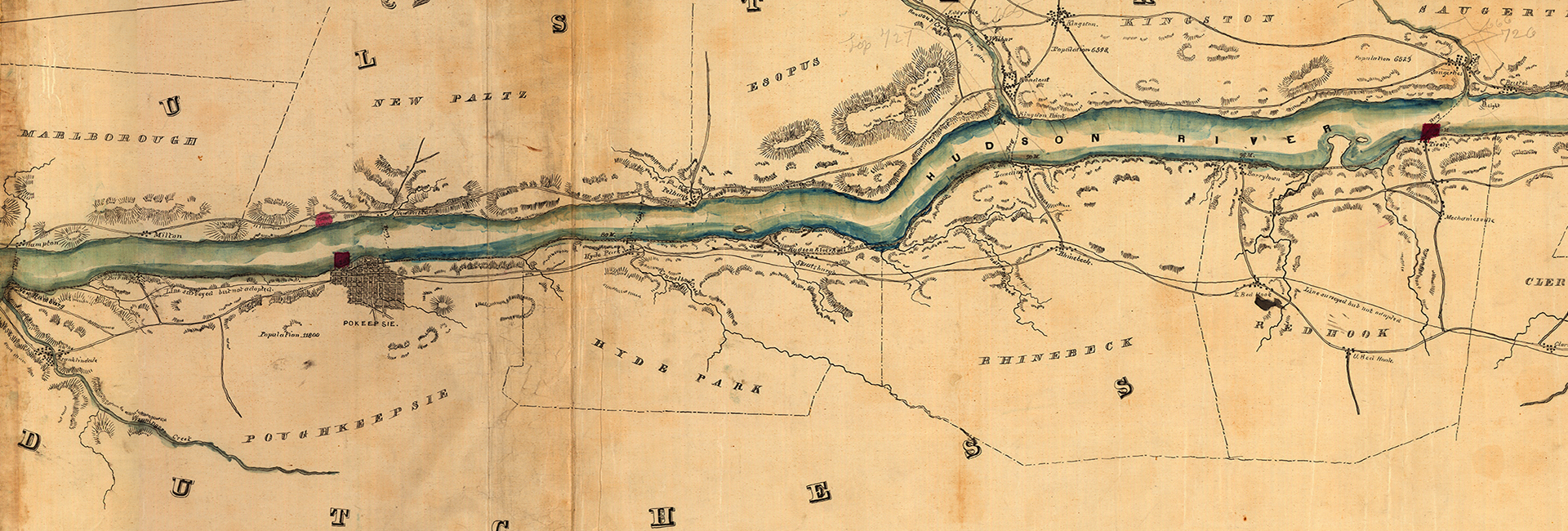
Photo Credit: The Hudson River Rail Road from New York to Albany, 1848. Library of Congress
What is the Hudson River Valley?
The Hudson River Valley is one of the America's most important scenic, cultural, economic, and historic regions. Discovered by Henry Hudson in 1609, the 315-mile long river was America's first river for many of the European colonists. For the Algonquin peoples, the Hudson estuary was called Mahicanituk, "The River That Flows Both Ways."
In 1996, Congress formed the Hudson River Valley National Heritage Area to recognize, to preserve, to protect, and to interpret the nationally significant history and resources of the valley for the benefit of the nation. Congress deemed the Hudson River Valley to be the "fountainhead of a truly American identity" because it has provided the setting and inspiration for new currents of American thought, art, and history.
Extending from Albany to the northern border of New York City, the Hudson River Valley National Heritage Area encompasses over 4 million acres. The region is home to 2.5 million residents, five National Historic Sites, 58 National Historic Landmarks, 89 historic districts, and over 1,000 sites listed on the National Register of Historic Places. The historic sites, parks, landscapes, and waterways throughout this 150-mile valley offer visitors a myriad of opportunities to discover people, places, and events that made important contributions to the story of America's evolution and prosperity.
As noted by New York State officials, communicating the wealth of the Valley's resources, however, presents a challenge. In 2002, the Hudson River Valley Institute at Marist, working with the National Heritage Area, launched this Digital Library and Portal to meet that challenge.